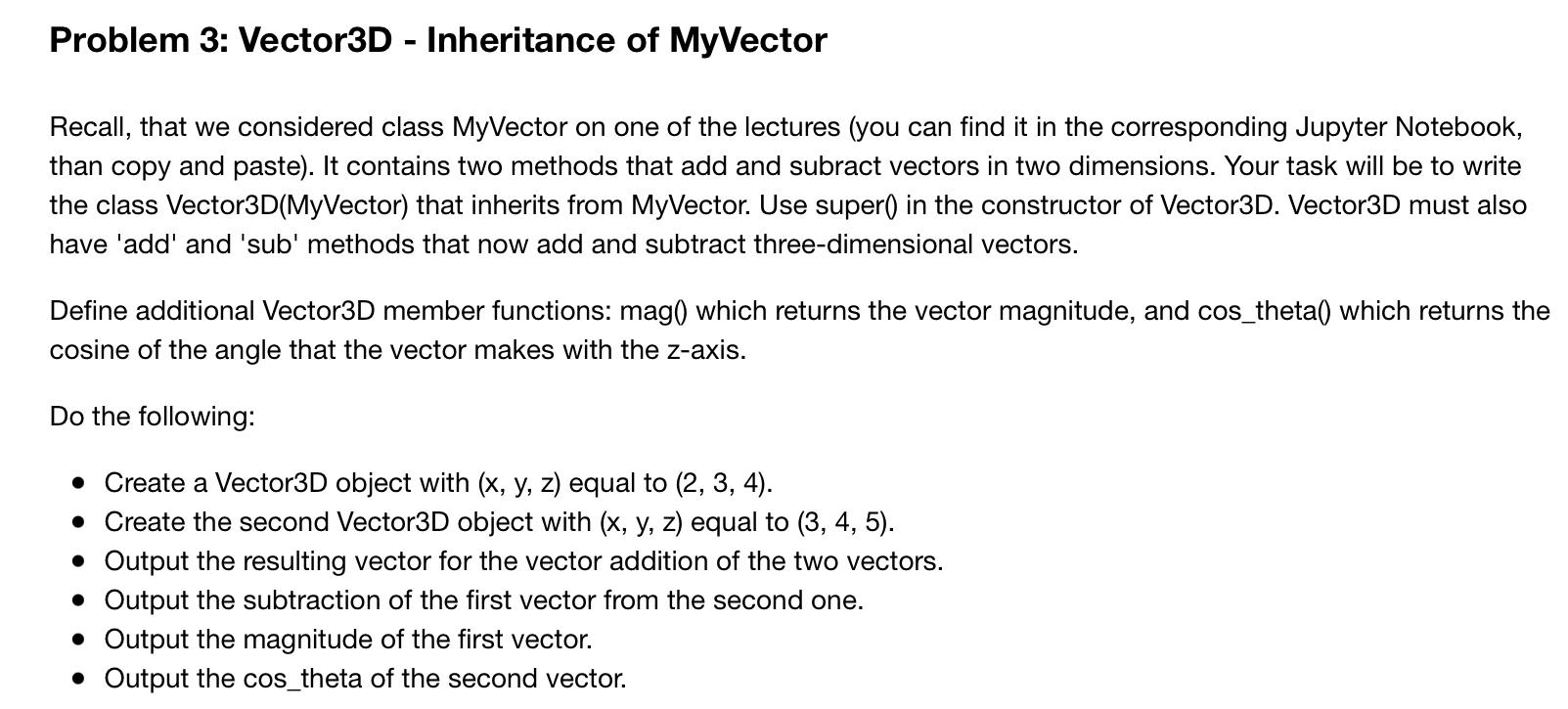Answered step by step
Verified Expert Solution
Question
1 Approved Answer
I need code please Problem 3: Vector3D - Inheritance of MyVector Recall, that we considered class MyVector on one of the lectures (you can find

I need code please
Problem 3: Vector3D - Inheritance of MyVector Recall, that we considered class MyVector on one of the lectures (you can find it in the corresponding Jupyter Notebook, than copy and paste). It contains two methods that add and subract vectors in two dimensions. Your task will be to write the class Vector3D( MyVector) that inherits from MyVector. Use super() in the constructor of Vector3D. Vector3D must also have 'add' and 'sub' methods that now add and subtract three-dimensional vectors. Define additional Vector3D member functions: mag() which returns the vector magnitude, and cos_theta) which returns the cosine of the angle that the vector makes with the z-axis. Do the following: Create a Vector3D object with (x, y, z) equal to (2, 3, 4). Create the second Vector3D object with (x, y, z) equal to (3, 4, 5). Output the resulting vector for the vector addition of the two vectors. Output the subtraction of the first vector from the second one. Output the magnitude of the first vector. Output the cos_theta of the second vector. Problem 3: Vector3D - Inheritance of MyVector Recall, that we considered class MyVector on one of the lectures (you can find it in the corresponding Jupyter Notebook, than copy and paste). It contains two methods that add and subract vectors in two dimensions. Your task will be to write the class Vector3D( MyVector) that inherits from MyVector. Use super() in the constructor of Vector3D. Vector3D must also have 'add' and 'sub' methods that now add and subtract three-dimensional vectors. Define additional Vector3D member functions: mag() which returns the vector magnitude, and cos_theta) which returns the cosine of the angle that the vector makes with the z-axis. Do the following: Create a Vector3D object with (x, y, z) equal to (2, 3, 4). Create the second Vector3D object with (x, y, z) equal to (3, 4, 5). Output the resulting vector for the vector addition of the two vectors. Output the subtraction of the first vector from the second one. Output the magnitude of the first vector. Output the cos_theta of the second vectorStep by Step Solution
There are 3 Steps involved in it
Step: 1

Get Instant Access to Expert-Tailored Solutions
See step-by-step solutions with expert insights and AI powered tools for academic success
Step: 2

Step: 3

Ace Your Homework with AI
Get the answers you need in no time with our AI-driven, step-by-step assistance
Get Started


